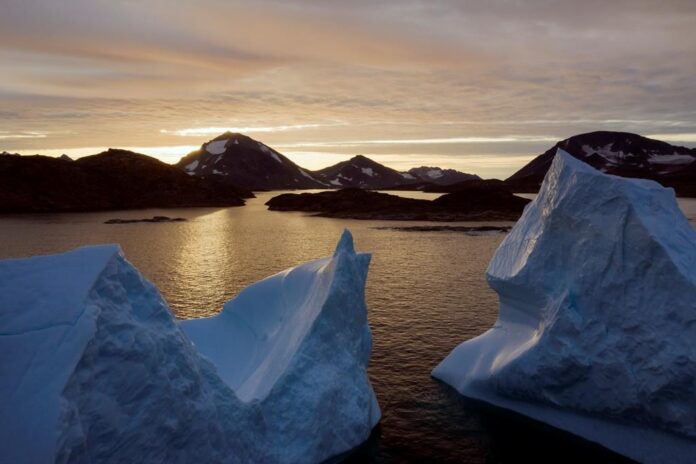Experts are raising the alarm on rising sea levels as the massive Greenland ice sheet melts. A recent study into zombie ice — areas of glaciers that are no longer being replenished with new ice as they melt — has blown prior projections out the water, with devastating implications for vulnerable coastal areas.
“It’s dead ice. It’s just going to melt and disappear from the ice sheet,” William Colgan, one of the study’s authors, said in an interview. “This ice has been consigned to the ocean, regardless of what climate (emissions) scenario we take now.”
Colgan, a glaciologist at the Geological Survey of Denmark and Greenland, published his findings on Monday in Nature Climate Change. The study found that zombie ice attached to Greenland’s glaciers will inevitably break off and raise the global average sea level by 27.4 centimetres — and that’s just the conservative estimate.
The study’s authors estimated that figure based on climate data from 2000 to 2019; but as human-caused climate change worsens over time, historical data may become less and less accurate.
In fact, Greenland’s zombie ice may cause sea levels to rise by 78.2 centimetres based on climate data from 2012, a “high-melt” year that may be more accurate in representing Greenland’s climate moving forward.
“That’s how climate change works,” Colgan said. “Today’s outliers become tomorrow’s averages.”
Read more:
Seawall damage a sign of things to come amid sea level rise and climate change, experts warn
These sea level estimates are far higher than the Intergovernmental Panel on Climate Change report predicted in 2021. That report projected that Greenland’s melting ice sheet would contribute six to 13 centimetres to the average sea level by 2100.
To determine how much sea levels would rise as Greenland melts, scientists looked at the equilibrium of its ice. In a normal balance, new snowfall in Greenland’s mountains flows down and replenishes glaciers, counteracting the effects of melting. But as climate change worsens, Greenland’s glaciers have seen less new snow and much more melting.
Trending Stories
‘Had so much life ahead of them’: Barrie mourns 6 young adults killed in crash
Canada set for ‘unprecedented’ home price drop by early 2023: TD Bank
“I think starving would be a good phrase” for what’s happening to the ice, Colgan said.
Colgan and his fellow authors calculated the imbalance between melting and replenishment and found that 3.3 per cent of Greenland’s total ice volume will melt, no matter what the world does to curb emissions and halt warming. That represents 110 trillion tons of ice.
The researchers noted in the study that they expect this inevitable melting to occur within the century.
The Greenland ice sheet is one of two ice sheets left on Earth, with the other being the Antarctic ice sheet. In reality, rising sea levels may be higher than what the Danish researchers predicted as the Antarctic contributes its own melting ice to the oceans.
A 2020 Nature study on the melting ice sheet in Antarctica found that for each degree that the Earth warms above pre-industrial levels, the Antarctic ice sheet will add an extra 1.3 metres to current sea levels. If the world does not meet the Paris Agreement’s target of keeping global warming under two degrees Celsius, the Antarctic ice sheet could contribute 2.4 metres to the average sea level per degree of warming. Between six to nine degrees of warming, about 10 metres will be added to the average sea level per degree.
According to the U.S. Global Change Research Program, the world’s average sea level has risen by 23 centimetres since 1880, with about eight centimetres added in the last 20 years.
As sea levels rise, coastal cities like Vancouver, New York and Shanghai will be the hardest hit, with the potential of redrawing the map entirely. Floods and extreme weather events will become more frequent and severe and will have major impacts on tides, currents and winds.
— With files from The Associated Press
© 2022 Global News, a division of Corus Entertainment Inc.



